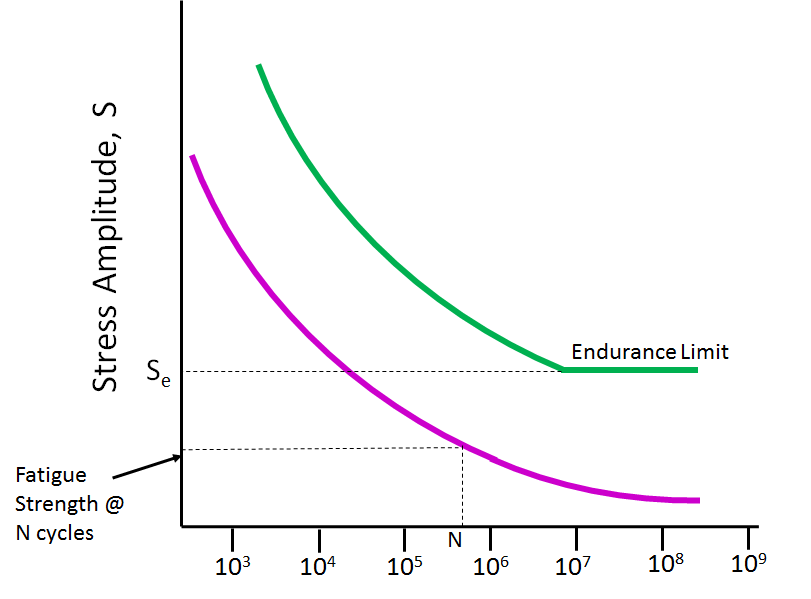Endurance Limit - Steel
Tags | |
UUID | 15553ba6-855f-11e3-9cd9-bc764e2038f2 |
The endurance limit for a material can be defined as the stress below which failure does not occur. This equation defines the typical endurance limit value for a number of metals and is used as an estimate when no better analysis is available. The equation can be used to check the endurance limit within other equations, as it return the limit below which no failure should occur.
For example, this equation returns 0.5 * SU for Steel's SU if the input SU, is less than 1400 MPa.
Notes
Metal fatigue characterizes the damage, the potential for damage that materials can incur due to cyclic loading. The amount of stress required to cause failure due to cyclic loading is much lower than stress values computed for tensile stress and therefore of chief concern in manufacturing.
Stress calculations identify failure probabilities by characterizing the ultimate tensile stress limit SU, and attempt to define the stress values for various materials that fall below the yield stress limit of the material.
Fatigue is often analyzed by gathering empirical data from stress test and using S-N Plots (Wohler plots), a depiction of stress versus lifetime, estimating a materials lifetime at a given stress level to see impacts.
Important Stress Factor Definitions:
|
Se = Endurance limit. The endurance limit, primarily attributed to ferrous materials and titanium, is the value below which the material will not fail at any number of cycles. Ses = Endurance limit based on shear stress S′e =
|
 |
SU (ultimate tensile strength) - the maximum stress that a material can withstand before failing. Tensile strength is not the same as compressive strength and the values can be quite different.
Sn (fatigue strength: tensile or compressive) - the maximum stress under which a material will fail after it has undergone the range of cyclic stress for a specified number of cycles.
Sns (fatigue shear strength) - the maximum shear stress under which a material will fail after it has undergone the range of cyclic shear stress for a specified number of cycles.
S′n (fatigue limit) - the maximum tensile or compressive stress for which the material will never fail.
S′e (endurance limit | tensile/compressive) the maximum stress from rotating the test object
S′es (endurance limit | shear) the maximum stress from rotating the test object
- Comments
- Attachments
- Stats
No comments |
